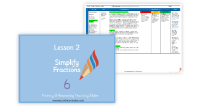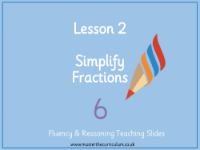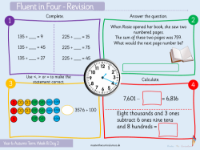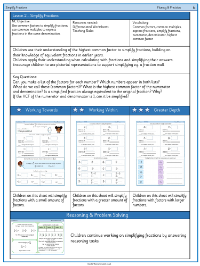Fractions - Simplify Fractions - Planning
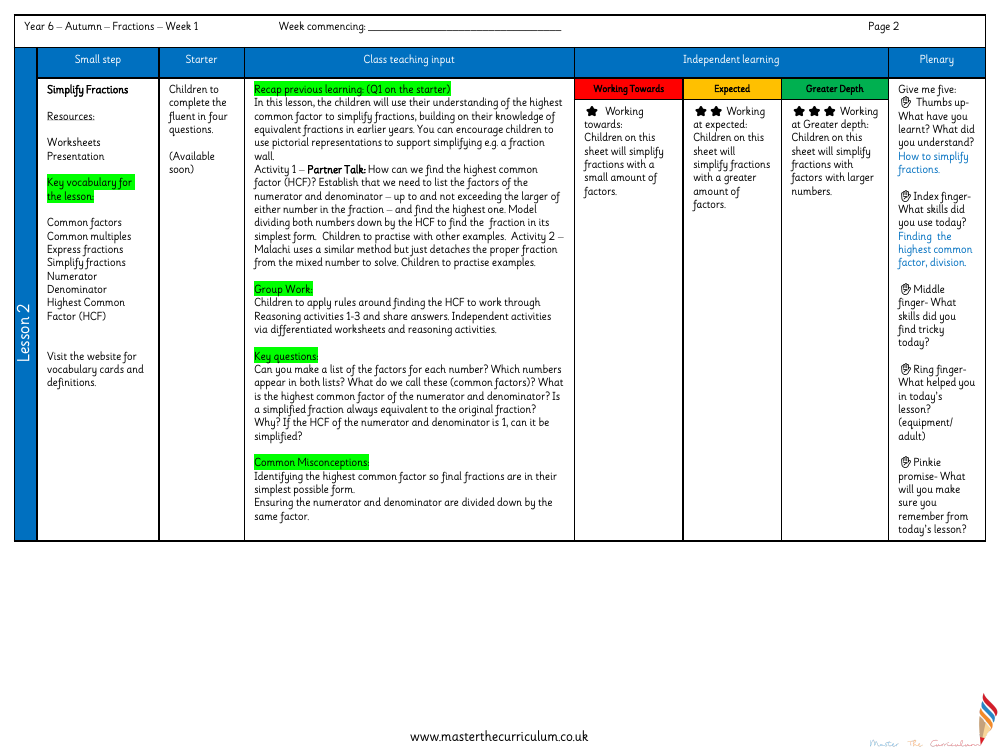
Maths Resource Description
In a Year 6 lesson centred around fractions, students are introduced to the process of simplifying fractions by identifying and applying the highest common factor (HCF). The lesson commences with a recap of previous learning, where children reflect on their knowledge of equivalent fractions. Following this, the class is encouraged to use visual aids like a fraction wall to assist in understanding the simplification process. The key vocabulary for the lesson includes terms such as 'common factors', 'numerator', 'denominator', and 'highest common factor'. These terms are crucial for grasping the concept of simplifying fractions and are available on the provided website in the form of vocabulary cards and definitions.
The lesson features a variety of activities, including partner discussions on finding the HCF by listing factors of the numerator and denominator, and then using it to simplify fractions. Children are also given the opportunity to practise this method independently with worksheets and reasoning activities. Additionally, they look at examples of mixed numbers and how to detach and simplify the proper fraction component. Group work allows students to delve deeper into reasoning tasks, applying the rules for finding the HCF. Key questions guide students to explore the relationship between common factors and simplification, ensuring they understand that a simplified fraction remains equivalent to the original. The lesson aims to address common misconceptions and reinforce the importance of dividing both numerator and denominator by the same factor. By the end of the lesson, students are expected to be able to simplify fractions with varying levels of complexity, from those with a small number of factors to those with larger numbers, demonstrating their understanding and application of the HCF.
